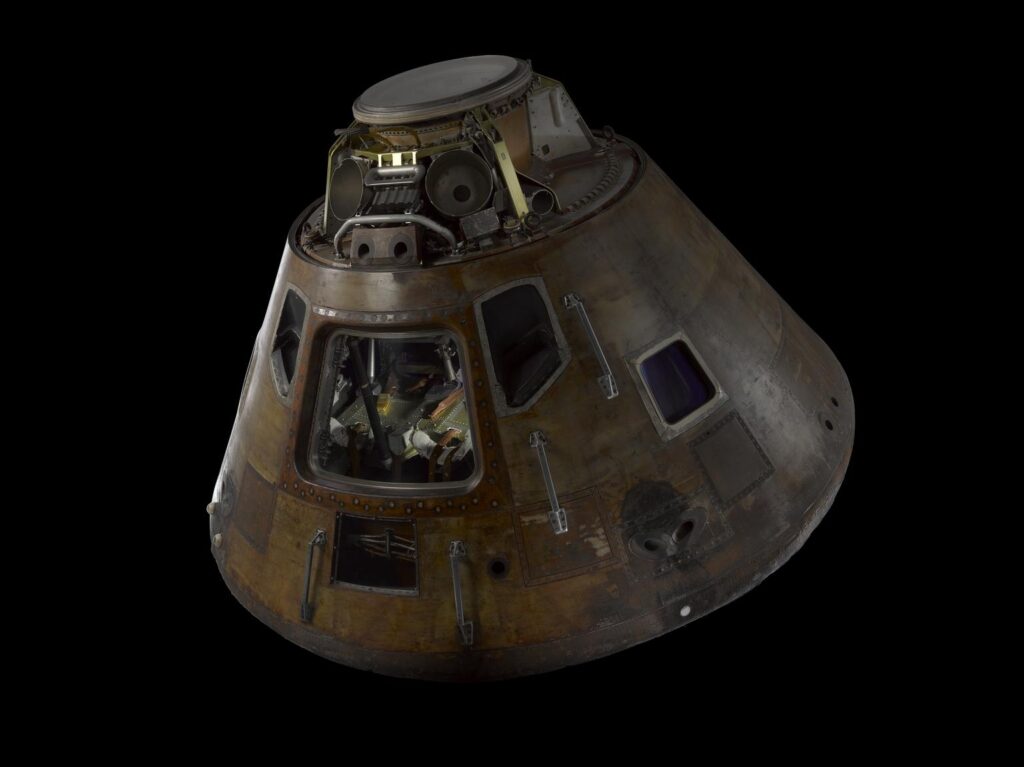
Next generation atom smashers
Plans are taking shape for the construction of a ‘Higgs factory’ that would dwarf the current 27-kilometre Large Hadron Collider, LHC, the world’s largest and most powerful particle accelerator. In 2025 a detailed feasibility study for a proposed 91-kilometre-long, US$17-billion supercollider at CERN, Europe’s particle-physics laboratory outside Geneva, Switzerland, is expected to report on the cost, technical aspects, and environmental impacts of what is called the Future Circular Collider (FCC). The report will feed into a final decision in 2028 with a view to starting the FCC in the mid-2040s
Supermaterials
The coming year will see a surge in the development of novel materials, according to John Lazar, President of the Royal Academy of Engineering. The world needs new materials to stimulate the economy by being greener, facilitating information storage, or being lighter, stronger, easier to recycle and so on. Yet nearly all smart materials are usually discovered by ‘trial-and-error.’ Now a more rational approach is emerging by combing through massive chemical datasets to discover materials for a bespoke application with the help of AI, as being done by Prof Jacqueline Cole in the University of Cambridge among teams worldwide, from IBM to Meta.
Even More AI
The past year has seen a relentless rise in the use of AI, from its use in next generation (quantum) computers for error correction to early crop pest detection (which won the Royal Academy of Engineering’s Africa Prize), though newly-minted Nobelist Demis Hassabis emphasised how more must be done to make AI truly scientific (here are AI’s shortcomings) at a Royal Society/ Google DeepMind AI for Science Forum. Where will global efforts take us in 2025?
‘There are those who believe AI poses an existential threat to humanity and there are those who believe that the benefits of AI will be many, varied and rich,’ according to Adrian Smith, President of the Royal Society, which has many leading AI experts among its Fellowship. ‘For me, this highlights the uncertainty that underpins technological advances at the cutting edge of research. And that is why open, evidence-based, debate is essential.
‘There is the related topic of scientific misinformation’, he added. ‘With AI increasingly driving search engines, trust will be essential, and it will have to be earned. If AIs cannot, or do not, distinguish between fact and fiction we are in trouble. Hopefully, the right balance of regulation and corporate responsibility will prevail.’
When it comes to healthcare, where AI has enormous potential, Andrew Morris, Director of Health Data Research UK and president of the Academy of Medical Sciences, posed the key question: ‘In 2025, will we move beyond hype to see real, measurable improvements in healthcare and NHS performance due to AI?’
Weight-loss drugs
Much has been written about the injectable weight loss drug Wegovy (semaglutide) and other GLP-1 agonists, so named because they mimic the action of the hormone glucagon-like peptide 1 (GLP-1), which is released by the stomach after eating and plays a role in hunger and satiety, among other things. The coming year is likely to see a new wave of approvals and trial results, not least of pill forms, cheaper formulations, and more research to explore the surprising potential of GLP-1 agonists to treat other illnesses, including Alzheimer’s and addiction.
Science Trumped
Donald Trump’s return to the office of US president in late January 2025 could have global ramifications for science. He may well roll back climate regulations given that, during his previous term, he pulled the United States out of the 2015 Paris climate agreement. During his election campaign, Trump promised to repeal President Joe Biden’s executive order on artificial intelligence (AI), a guideline for developing AI technology responsibly. The appointment of billionaire Elon Musk to lead an advisory body named the Department of Government Efficiency could also impact the budgets and workforces of science agencies.
Genetic therapies
Now the genetic basis of many diseases is understood, genome editing and other gene therapies pave the way for treatments for previously incurable conditions. Early in 2025, the first two Medical Research Council Centres of Research Excellence will start work to turn genomics advances into advanced therapeutics for rare diseases, blindness and neurodegenerative conditions like Huntington’s disease, said Patrick Chinnery, Executive Chair of the MRC: ‘One centre, called the MRC/BHF CoRE in Advanced Cardiac Therapies, will be co-funded with the British Heart Foundation and focus on developing gene therapies for heart disease. The other, MRC CoRE in Therapeutic Genomics, aims to make rare genetic disorders treatable by enabling the mass production of affordable cutting-edge gene therapies which target the genetic code itself.’ The UK in 2023 became the first country to approve the use of Casgevy, which uses the gene-editing tool CRISPR to correct the DNA of patients who suffer sickle cell disease and β-thalassemia – painful, life-long blood disorders that can be fatal.
Mind-reading
Although much has been written about brain implants made by Elon Musk’s firm Neuralink, through which patients can control devices with their thoughts, a wealth of other research has taken place on so called ‘brain computer interface’ (BCI) technologies. Now China’s Ministry of Industry and Information Technology has announced plans to develop devices for applications ranging from virtual reality to medical rehabilitation: as one example, NEO, a wireless BCI with eight electrodes placed over the brain’s sensorimotor cortex, is designed to restore hand movement in people with paralysis. Expect to see the results of more mind-reading trials in 2025.
Lunar missions
A highlight of any visit to the Science Museum is Apollo 10 but, in some ways, its 1969 mission to our nearest neighbour seems even more remarkable given NASA has delayed its Artemis missions to put humans back on the moon and recent failures, from an Israeli mission in 2019 to Russia’s Luna-25 in 2023, both of which ended in crash landings.

Various missions are scheduled in 2025, including: Tokyo-based company ispace plans to launch Venture Moon, which will carry a lander and a micro-rover; Blue Ghost, developed by Firefly Aerospace, will deliver ten payloads; Intuitive Machines in Houston, Texas, will carry four NASA payloads to the Reiner Gamma region of the Moon, near the equator. Meanwhile NASA’s Lunar Trailblazer will orbit the Moon and map its surface water and Japan’s Resilience will deliver a rover named Tenacious. Doug Millard, Deputy Keeper of Technologies and Engineering, remarked: ‘2025 is sure to be an interesting year for US space programmes as President Elect Trump is joined in an advisory capacity by Elon Musk, CEO of SpaceX, which developed the giant Starship rocket.’
COP 30
The November 2025 COP30 climate summit in the rainforest city of Belém, Brazil, the gateway to the Amazon, will mark three decades of United Nations climate talks. After the disappointment of COP29, nations hope to secure climate finance pledges to support developing countries, though keeping global temperatures to below 1.5 deg. above pre industrial levels is looking increasingly unattainable, making 2024 a disappointing year for environmentalists given setbacks for efforts to boost biodiversity and curb plastic pollution.
Yearly deforestation in the Brazilian Amazon has fallen by almost a third since August 2023, reaching a nine-year low, but President Luiz Inácio Lula da Silva’s government has been criticized by environmentalists for backing projects that could harm the region, stirring concerns that the Amazon rainforest is approaching a tipping point, when the forest could turn into a dry grassland or savannah, releasing more planet-heating carbon dioxide to disrupt the global climate system.
Two satellites will provide a new view of the world in 2025: the US-Indian NISAR (NASA-ISRO Synthetic Aperture Radar) mission will map Earth’s land- and ice-covered surface twice every 12 days; and the European Space Agency’s Biomass mission will use radar to study forest biomass and its role in the carbon cycle. This year will also see 1PointFive’s STRATOS Direct Air Capture plant in Texas, the largest of its kind, begin to remove carbon dioxide from the atmosphere to store it underground.
Pulsed neutrons
Speaking as someone who spent their formative years bouncing neutrons off soap bubbles, I keenly await the start-up in 2025 of the European Spallation Source in Lund, Sweden, which will generate neutron pulses by firing a beam of protons at a helium cooled heavy-metal target. The ESS will enable scientists to see and understand basic atomic structures and forces – think of it as a giant microscope for the study of materials, ranging from small molecules and pharmaceuticals to proteins and plastics.